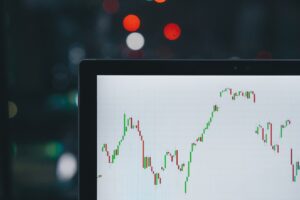Pip Meaning in Forex: Understanding the Basics of Currency Trading
When it comes to forex trading, understanding the concept of pips is essential. Pips, short for “percentage in point,” are the smallest unit of measurement used in forex trading to represent changes in currency pairs. In this article, we will delve into the meaning of pips, how they are calculated, and their significance in the world of currency trading.
To comprehend the significance of pips, it’s crucial to have a basic understanding of how forex trading works. The forex market is the largest and most liquid financial market globally, where currencies are bought and sold. Traders aim to profit from the fluctuations in exchange rates by speculating on whether a currency will appreciate or depreciate against another currency.
Currency pairs are the backbone of forex trading, representing the value of one currency against another. For instance, the EUR/USD pair represents the euro against the US dollar. Each currency pair has a specific price, which fluctuates in response to various economic and political factors.
Pips are used to measure and express the change in the value of a currency pair. In most cases, currency pairs are quoted with four decimal places, except for some Japanese yen pairs, which are quoted with two decimal places. The fourth decimal place is known as a pipette, which represents a fraction of a pip.
Let’s take an example to understand how pips work. Suppose the EUR/USD pair is trading at 1.1234, and it increases to 1.1235. The change in the fourth decimal place (from 4 to 5) represents one pip. If the price further increases to 1.1236, it would represent a two-pip movement. Similarly, if the price decreases to 1.1233, it would indicate a one-pip decrease.
The value of a pip is determined by the size of the trade, which is usually measured in lots. A standard lot represents 100,000 units of the base currency, while a mini lot represents 10,000 units, and a micro lot represents 1,000 units. The value of a pip can vary depending on the lot size and the currency pair being traded.
To calculate the value of a pip, you can use the following formula:
Value per pip = (0.0001 / exchange rate) * lot size
For example, let’s say you are trading a standard lot of the EUR/USD pair, and the exchange rate is 1.1234. Using the formula, the value per pip would be:
(0.0001 / 1.1234) * 100,000 = $8.89
This means that for every one-pip movement in the price of the EUR/USD pair, you would gain or lose $8.89, depending on the direction of the movement.
Understanding pips is crucial for risk management and determining potential profits or losses. It allows traders to calculate the risk-reward ratio of a trade and set appropriate stop-loss and take-profit levels.
Moreover, pips are also essential for calculating the spread, which is the difference between the bid and ask price of a currency pair. The spread is measured in pips and represents the cost of the trade. The narrower the spread, the lower the cost of trading, making it more favorable for traders.
In conclusion, pips are the foundation of forex trading, representing the smallest unit of measurement for changes in currency pairs. They play a crucial role in calculating profits and losses, determining the value of a trade, and managing risk. By understanding the meaning and significance of pips, traders can make informed decisions and navigate the complex world of currency trading more effectively.






